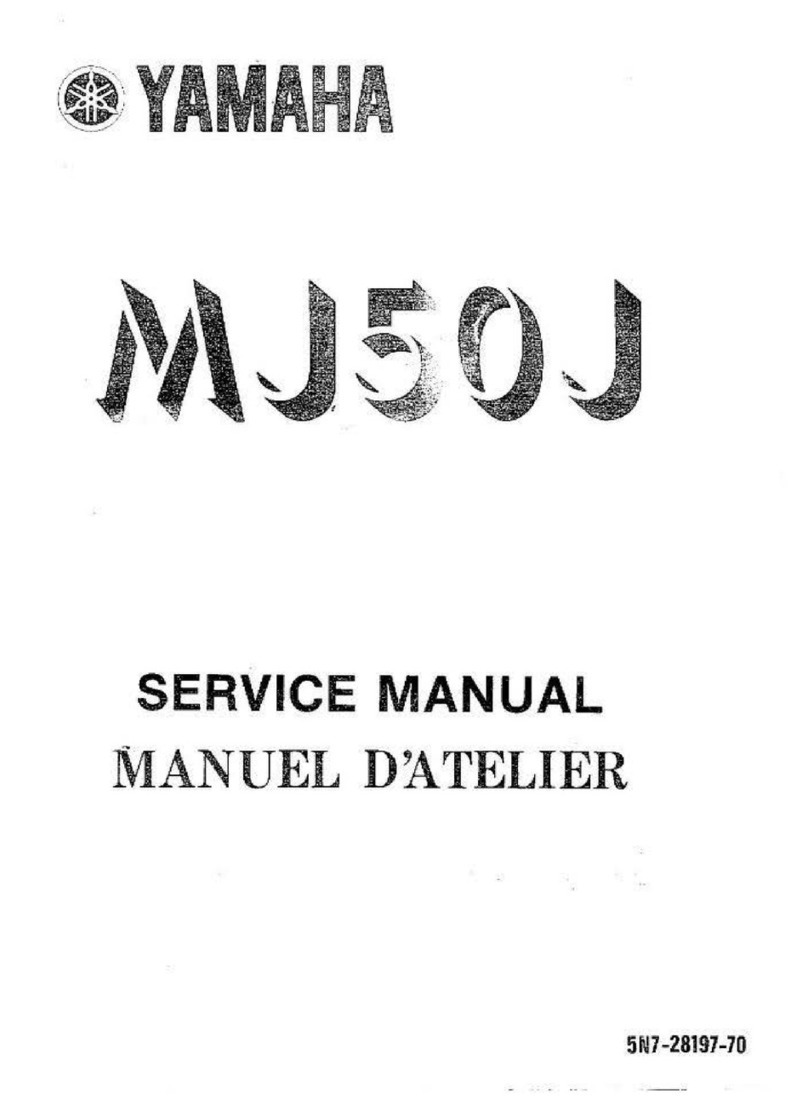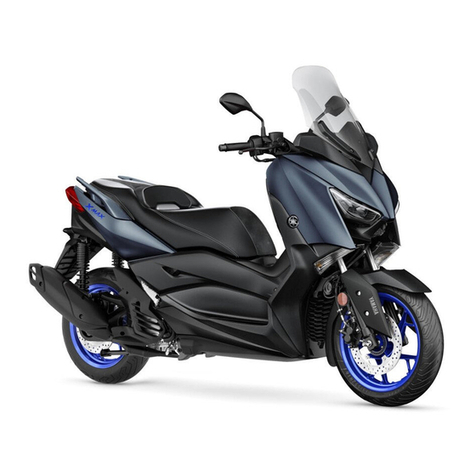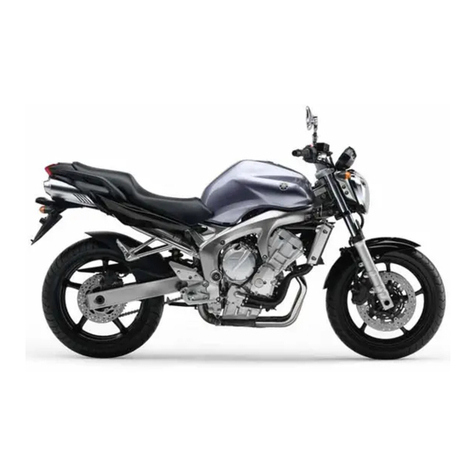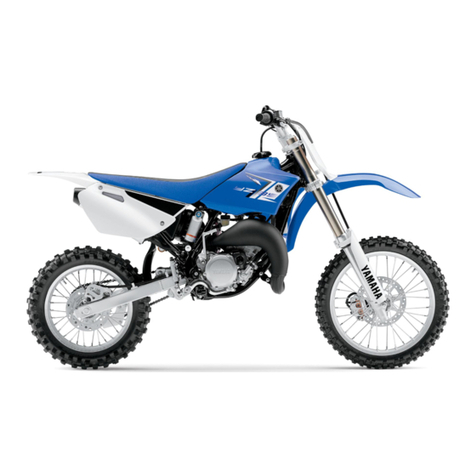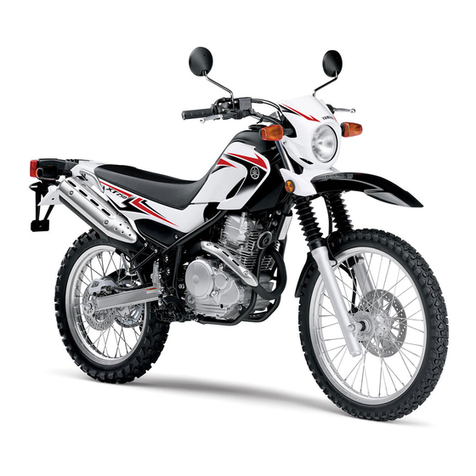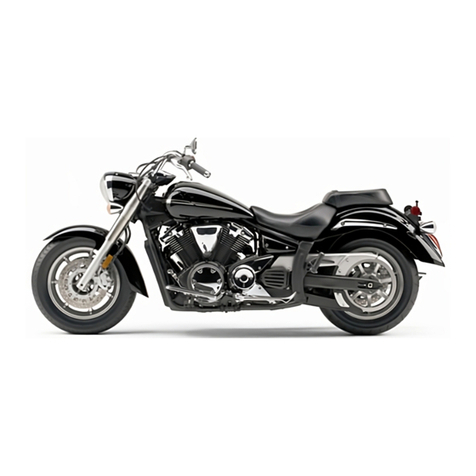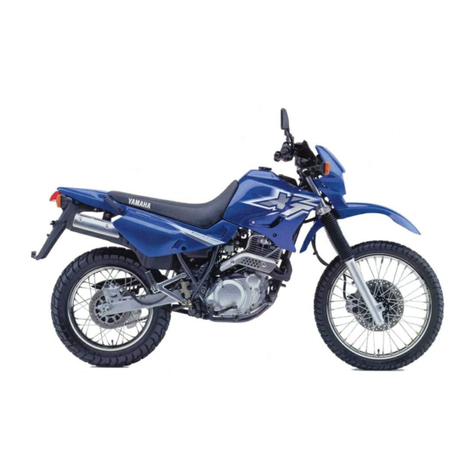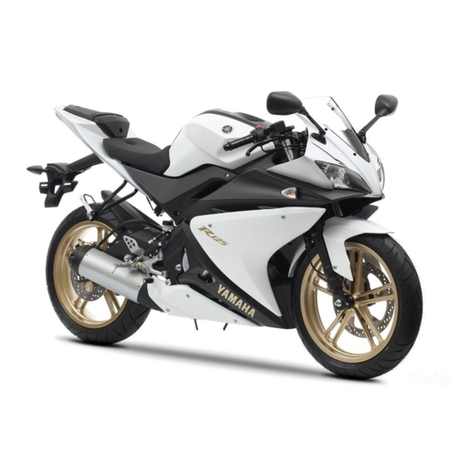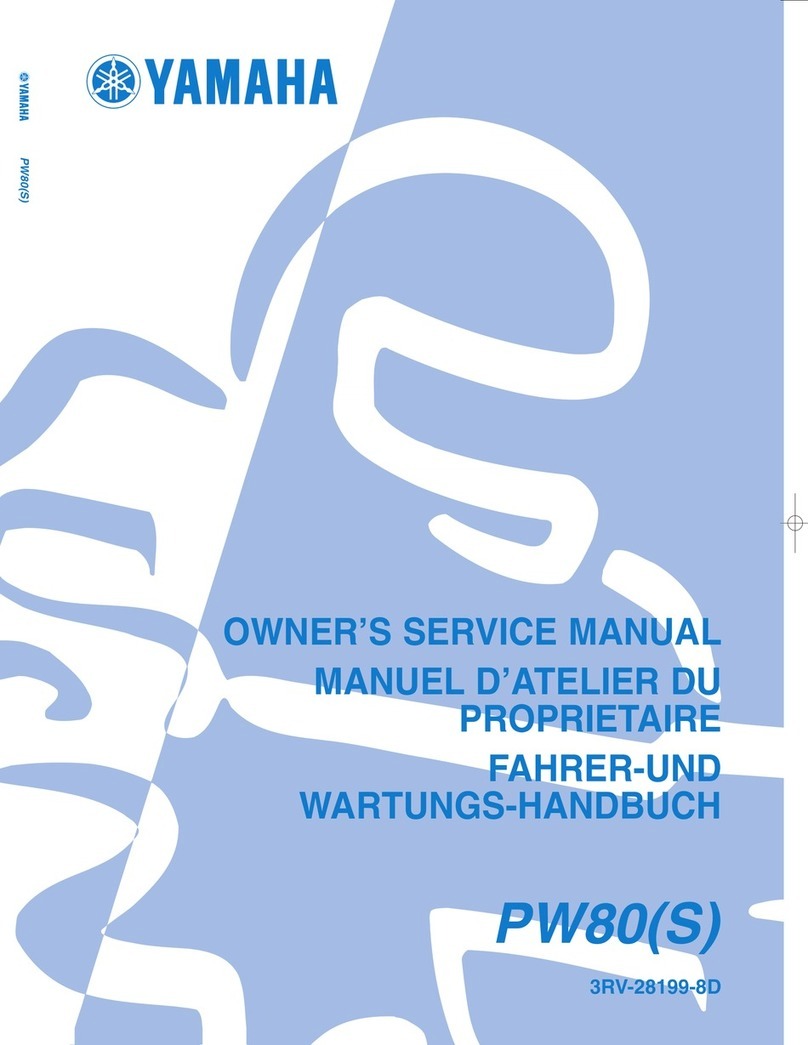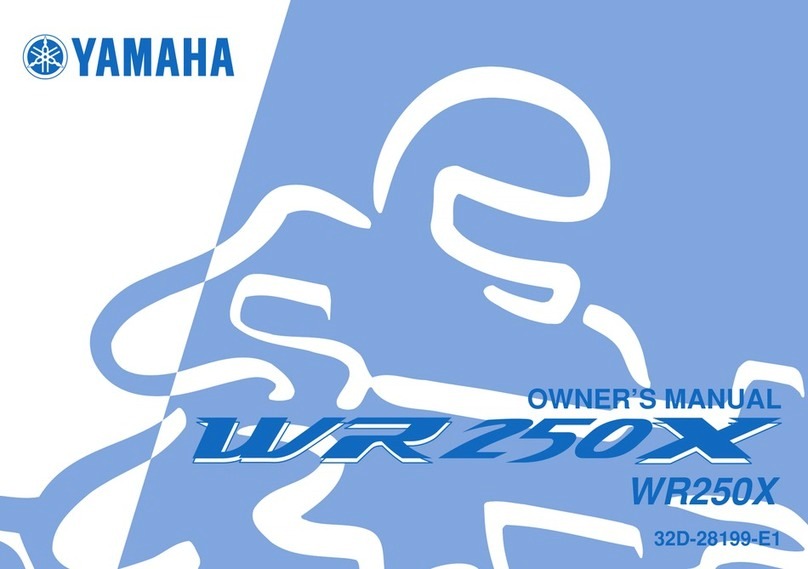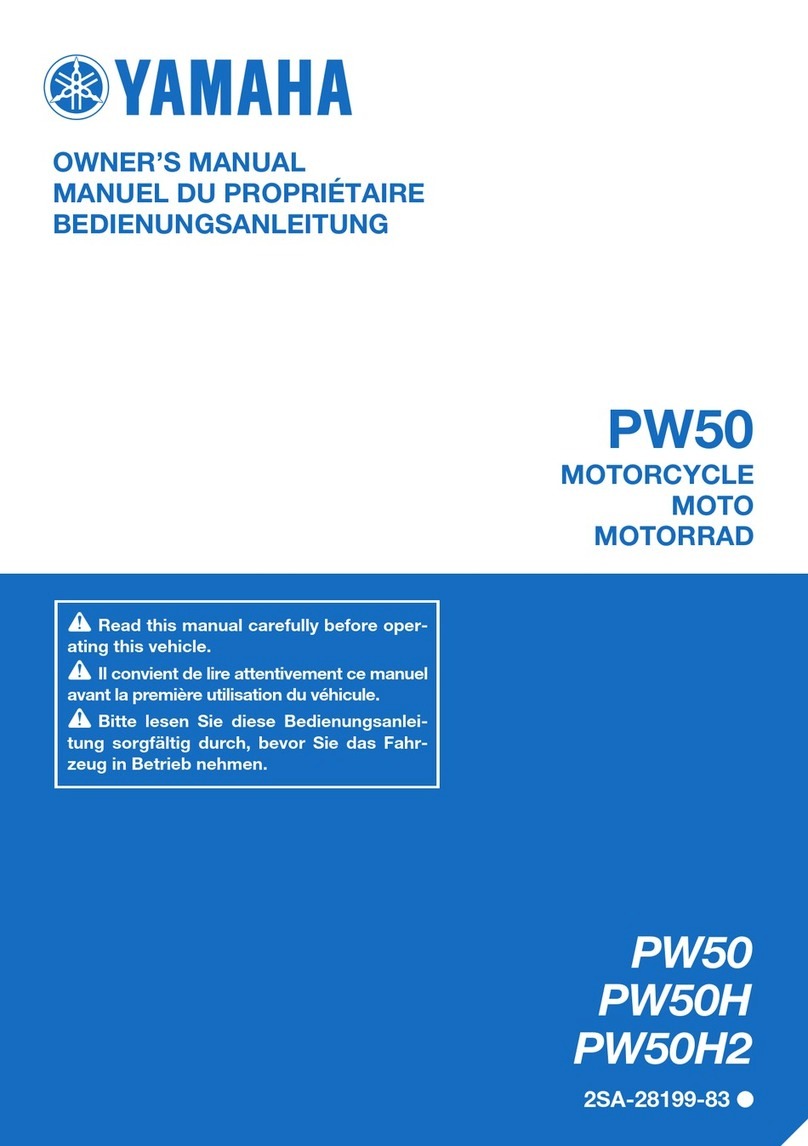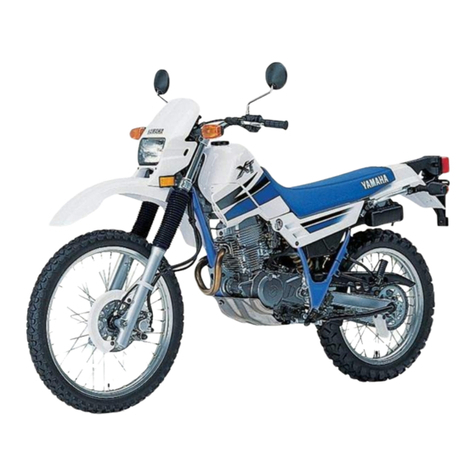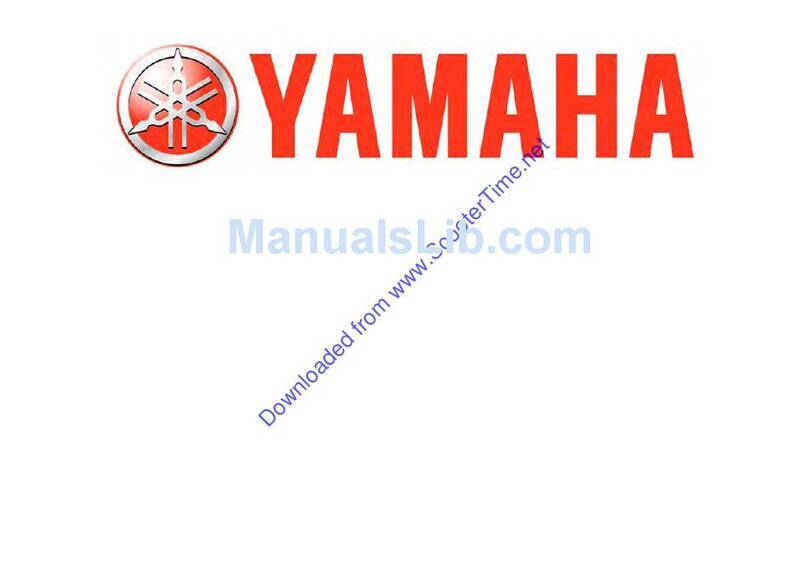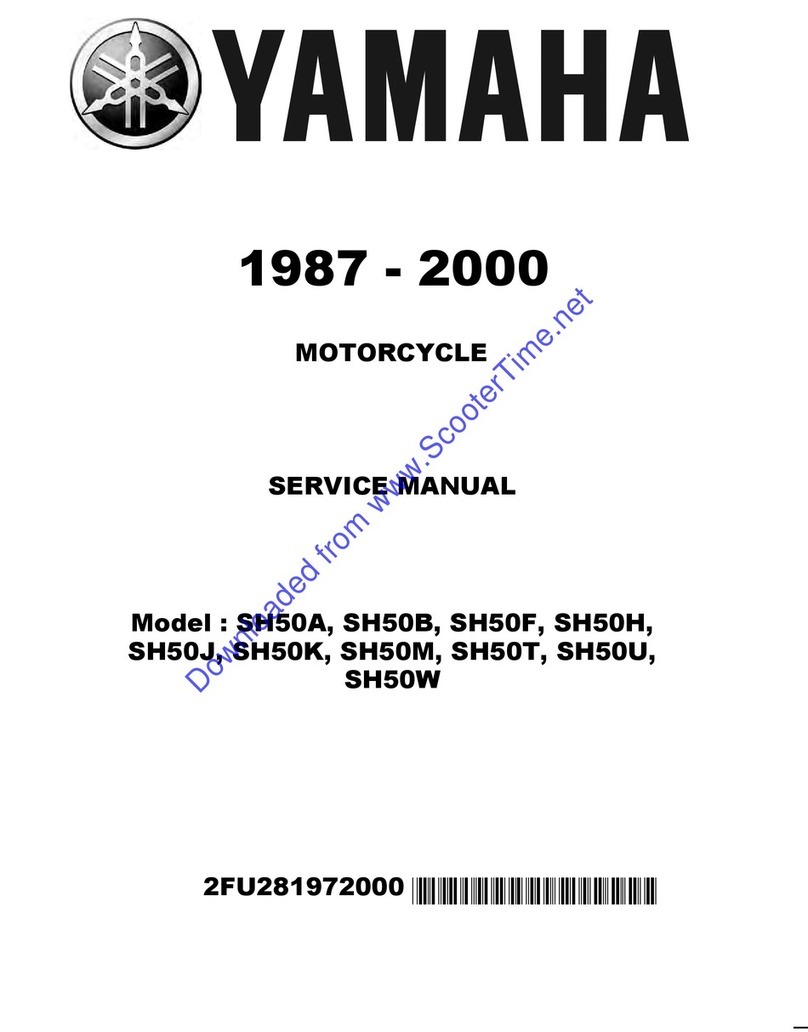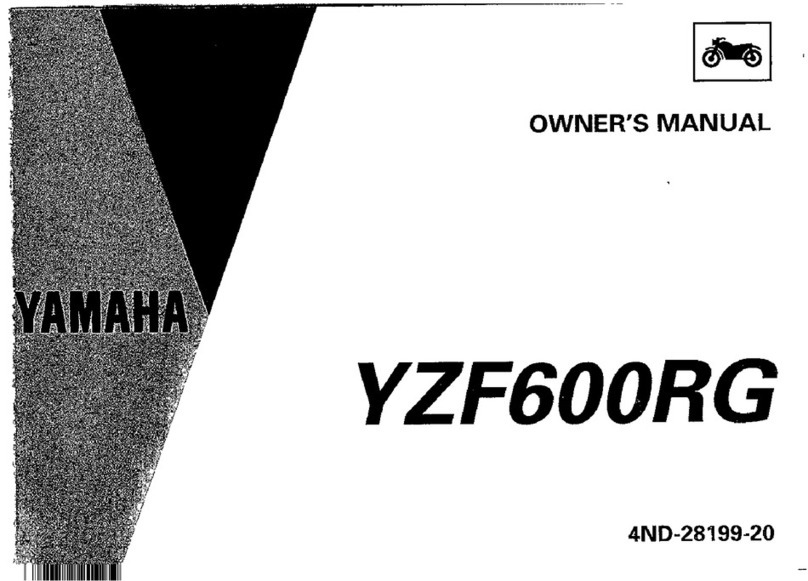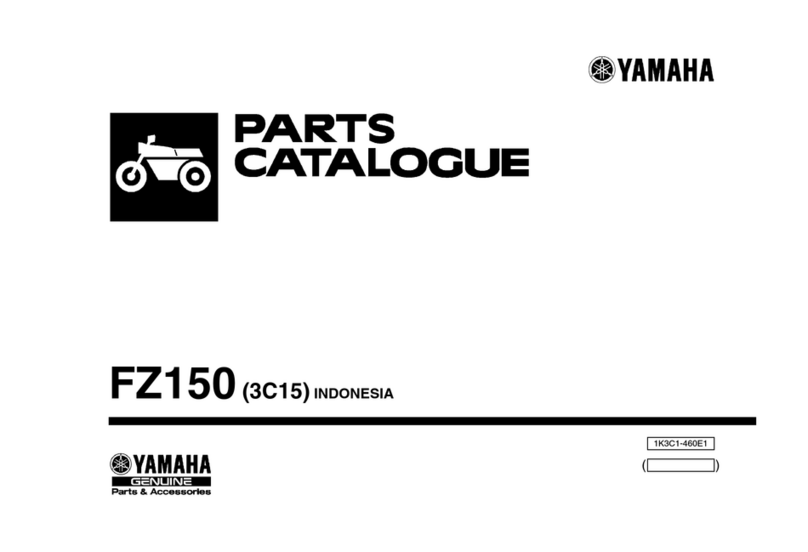TABLE OF CONTENTS
LOCATION OF IMPORTANT
LABELS ............................................. 1-1
SAFETY INFORMATION .................. 2-1
DESCRIPTION .................................. 3-1
Left view ......................................... 3-1
Right view....................................... 3-2
Controls and instruments ............... 3-3
INSTRUMENT AND CONTROL
FUNCTIONS...................................... 4-1
Main switch/steering lock............... 4-1
Indicator lights and warning
lights............................................ 4-2
Multi-function meter unit ................ 4-4
D-mode (drive mode).................... 4-10
Handlebar switches...................... 4-11
Clutch lever .................................. 4-13
Shift pedal .................................... 4-13
Brake lever.................................... 4-13
Brake pedal .................................. 4-14
Fuel tank cap................................ 4-14
Fuel............................................... 4-15
Fuel tank breather hose and
overflow hose............................ 4-16
Catalytic converter ....................... 4-16
Seat .............................................. 4-17
Storage compartment .................. 4-18
Adjusting the front fork ................. 4-18
Adjusting the shock absorber
assembly....................................4-20
Luggage strap holders ..................4-21
Sidestand ......................................4-22
Ignition circuit cut-off system .......4-22
Auxiliary DC connector .................4-24
FOR YOUR SAFETY –
PRE-OPERATION CHECKS .............5-1
OPERATION AND IMPORTANT
RIDING POINTS ................................6-1
Starting the engine..........................6-1
Shifting ............................................6-2
Engine break-in...............................6-4
Parking ............................................6-4
PERIODIC MAINTENANCE AND
ADJUSTMENT...................................7-1
Owner’s tool kit...............................7-2
Periodic maintenance chart for the
emission control system..............7-3
General maintenance and
lubrication chart...........................7-5
Checking the spark plugs ...............7-9
Canister (for California only)..........7-10
Engine oil and oil filter cartridge....7-10
Coolant..........................................7-13
Air filter element ............................7-15
Checking the engine idling
speed.........................................7-16
Checking the throttle grip free
play............................................ 7-16
Valve clearance............................. 7-16
Tires .............................................. 7-17
Cast wheels .................................. 7-19
Adjusting the clutch lever free
play............................................ 7-20
Checking the brake lever free
play............................................ 7-20
Brake light switches ..................... 7-21
Checking the front and rear brake
pads .......................................... 7-21
Checking the brake fluid level ...... 7-22
Changing the brake fluid .............. 7-23
Drive chain slack........................... 7-24
Cleaning and lubricating the drive
chain.......................................... 7-25
Checking and lubricating the
cables........................................ 7-26
Checking and lubricating the
throttle grip and cable............... 7-26
Checking and lubricating the
brake and shift pedals............... 7-27
Checking and lubricating the
brake and clutch levers ............. 7-27
Checking and lubricating the
sidestand................................... 7-28
Lubricating the swingarm
pivots......................................... 7-28
Checking the front fork................. 7-29
Checking the steering................... 7-29
